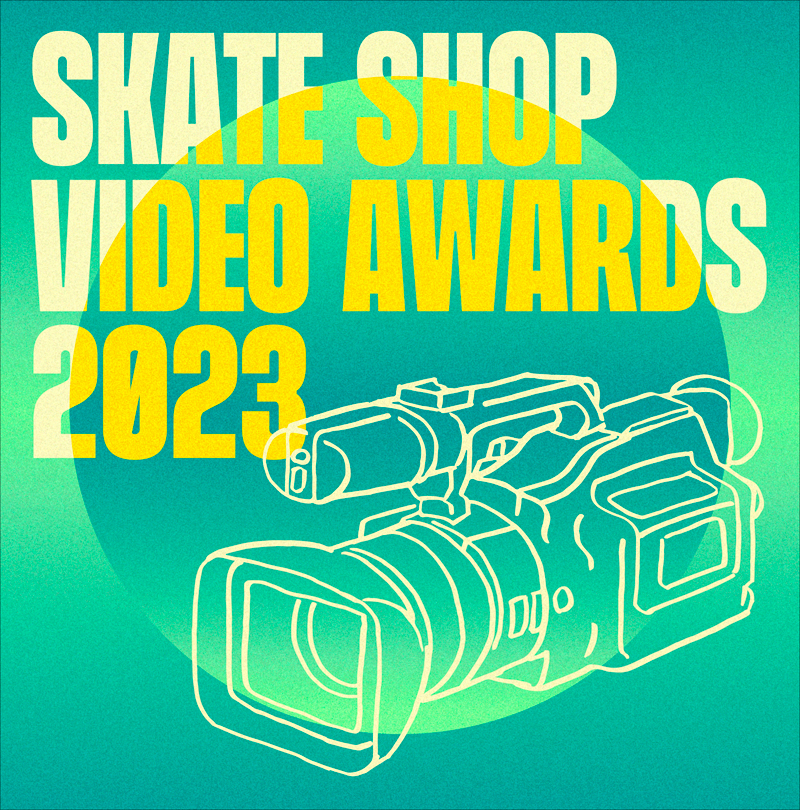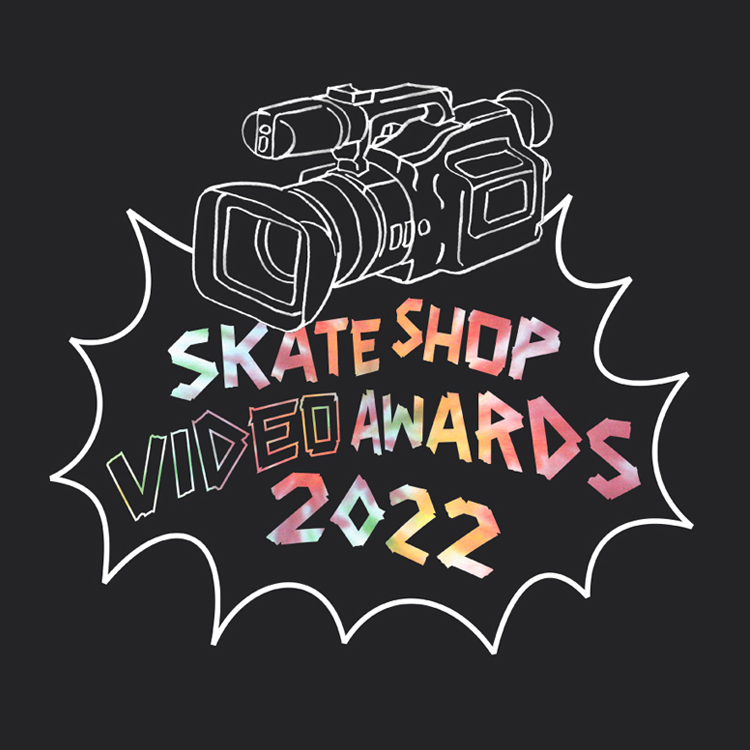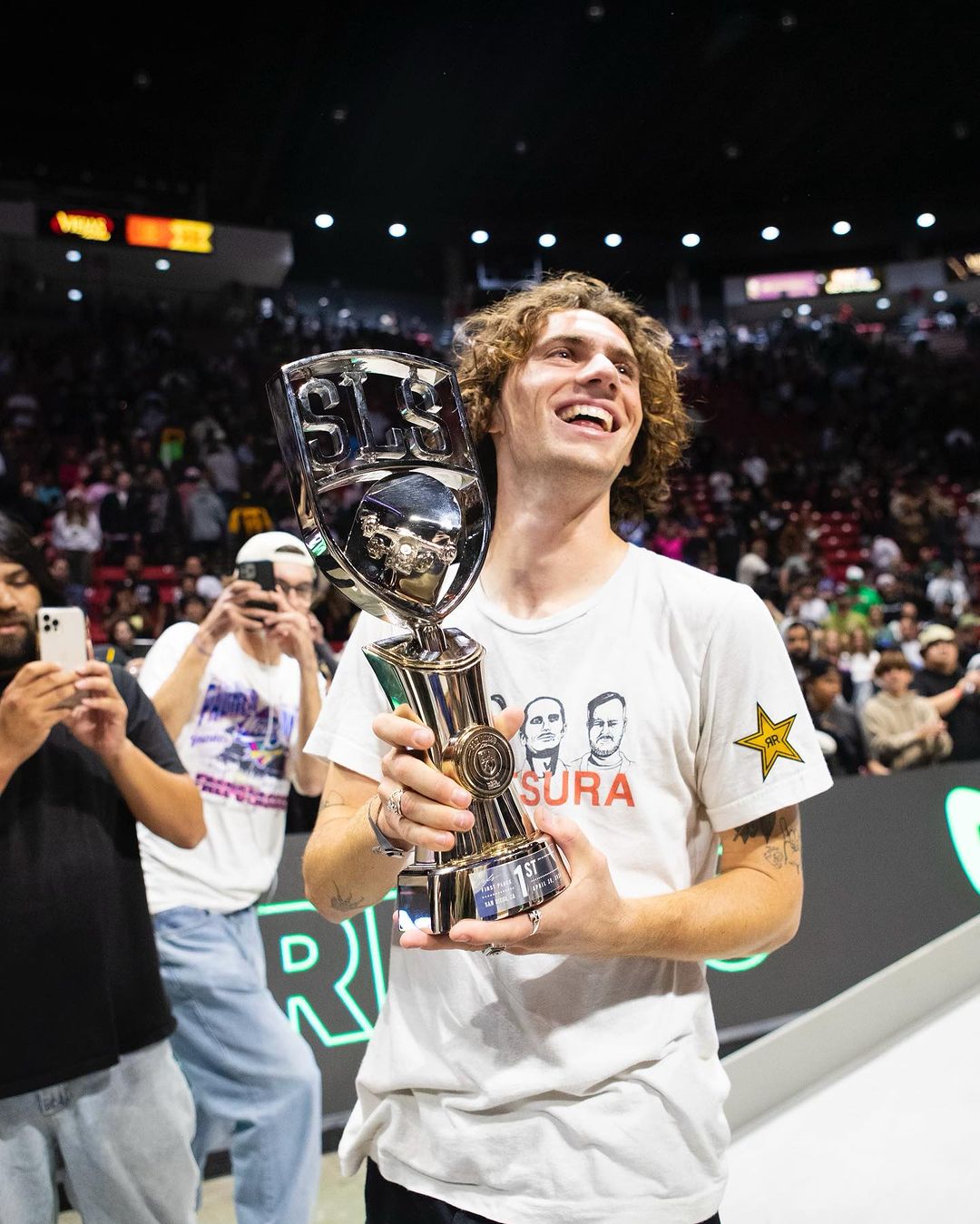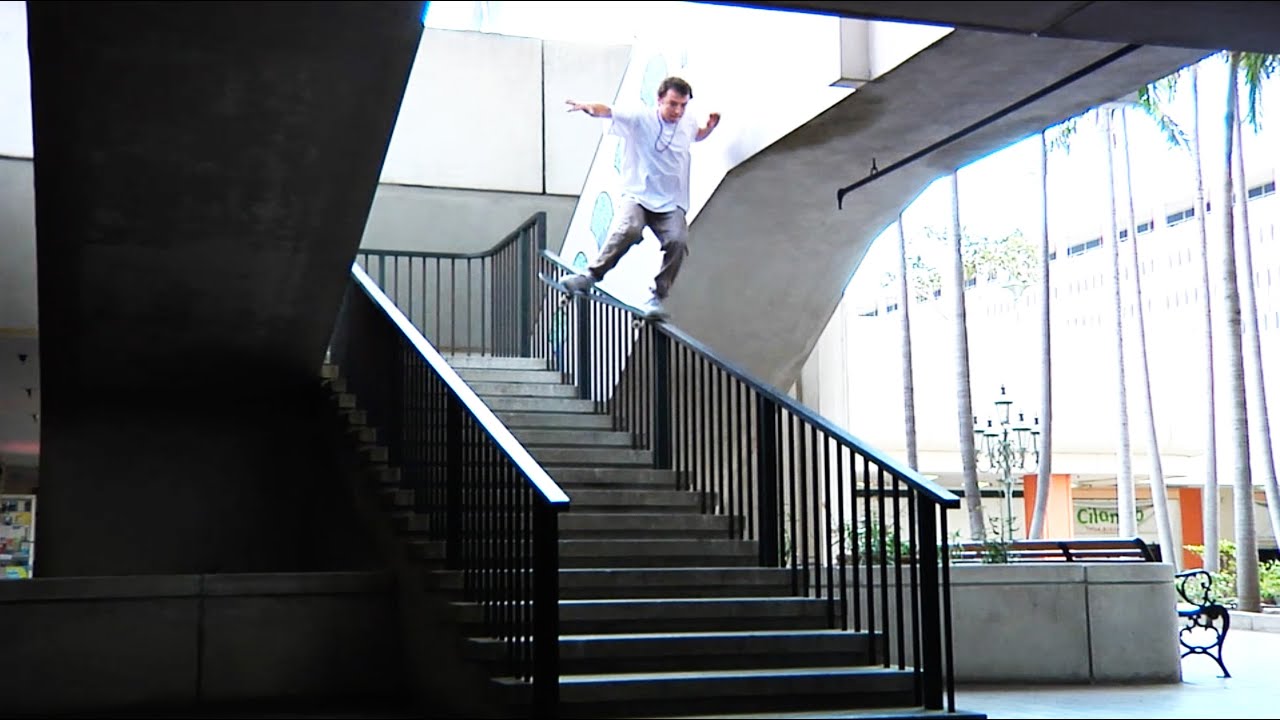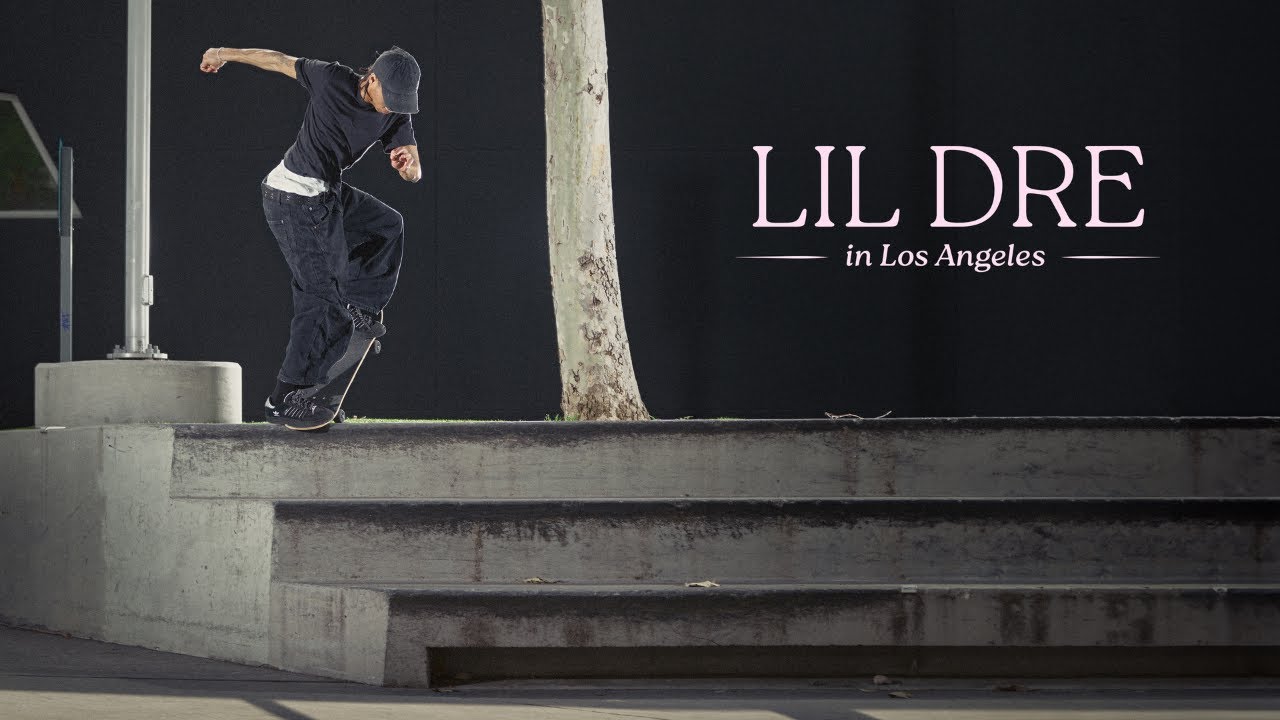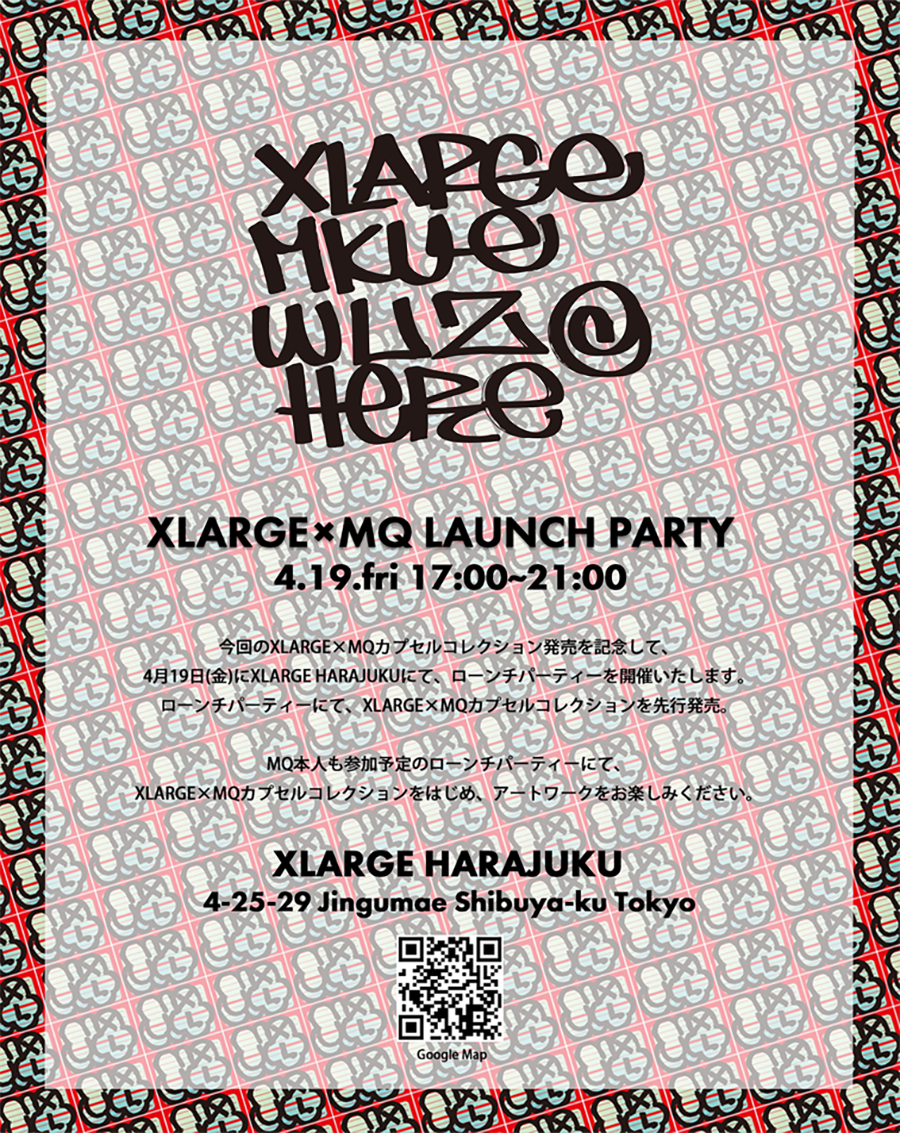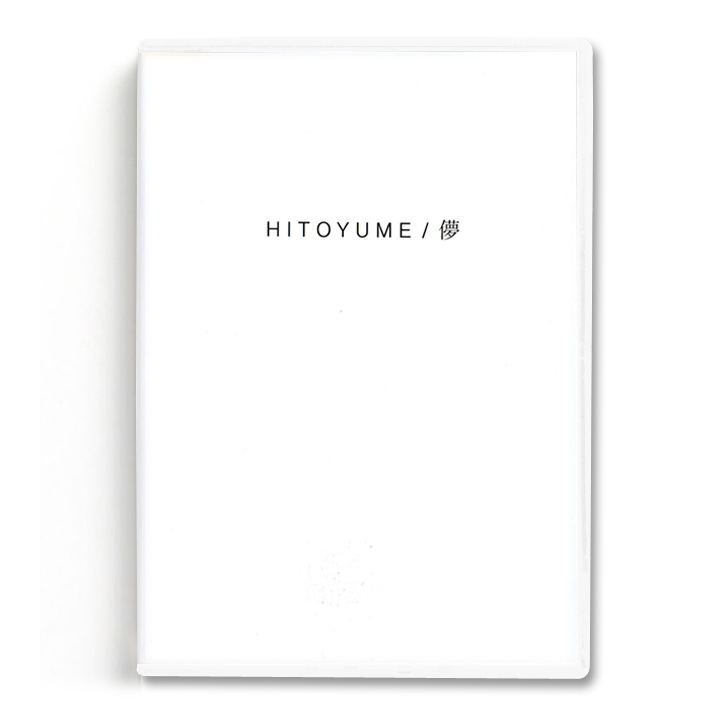Made over the course of seven years, a road movie shot on 16mm film "YE OLDE DESTRUCTION." No sponsor; it's all about having good times with skaters. We sat with the director Thomas Campbell and had him go through all the process of this amazing work.
──THOMAS CAMPBELL (ENGLISH)
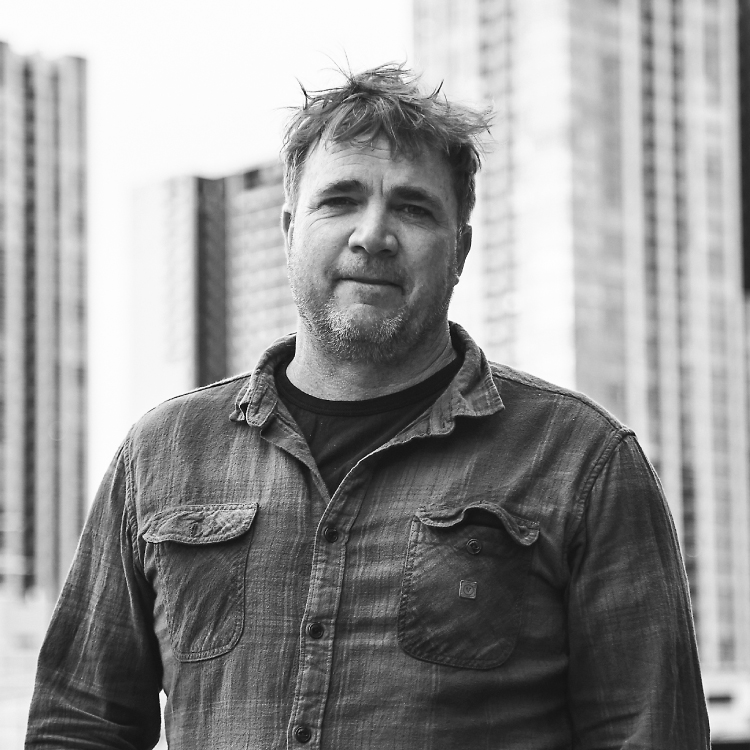
[ JAPANESE / ENGLISH ]
Portrait_Junpei Ishikawa
Photos courtesy of_YOD
Special thanks_Nike SB Japan
VHSMAG (V): Congratulations on your latest film "YE OLDE DESTRUCTION." What's the story behind the title?
Thomas Campbell (T): The movie ends up in a smash-up derby. It's two cars and two groups of skaters skating different spots and then coming together at the end, and then smash-up derby. And skating's kind of destructive by nature, so I just thought it was a funny name.
V: I heard this film is self-funded. What propelled you to work on a non-sponsored project?
T: I think I just really wanted to make something that was more of a celebration of skateboarding and I just turned 50. I started skateboarding when I was five and skateboarding's pretty much given me everything in my life. To be a creative person, given me the drive to do all the things that I've done. I just felt like I didn't want to sell anything with it so I tried to come up with a way where I could raise some money and then make a film that was just about the celebration of what it is. I didn't like the idea of having sponsors for this particular project.
V: How did you raise the budget?
T: What I did is, I think there's over 40 artists, a lot of my friends that I've showed with over the years and are friends of mine. And my friend Lee at Creature Skateboards got me these big blanks that were really raw, just the laminates and the glue were dripping out the side. No holes drilled. Just a blank. And you look at it like, "What is that? Is it a piece of furniture?" I liked the fact that it didn't really look like a skateboard and then I got all my friends to paint them, and then I auctioned those off. It worked out well.
V: Most of the film was shot in 16mm which costs a lot, and you went on trips for the shoot. Did the auction pay off all the production fee?
T: It's probably pretty close. It's not gonna have a monetary success, but it was never meant for that. So I don't really worry about it too much.
V: When I think of Thomas Campbell and black and white film, it reminds me of A Love Supreme back in 1995. What is it about black and white film that you do?
T: I just feel that skateboarding's really emotional and I think it's also in the way that skateboarding's documented currently and mostly, it's not documented in a very emotional way, like trick, trick, trick, and it's fast. So there's not a lot of expansion on the life and actually what the emotional properties in the emotional field of what's happening. So I feel like black and white film really portrays a deeper emotion. So, I don't know, it just felt like the right thing to do.
V: Has the approach changed since A Love Supreme?
T: I think there's some modern aspects. It's not all film, it's like 90 percent film and then we used some drone stuff. But also if you noticed in the film, most of the drones are not moving. So it's really more about giving a perspective so you're understanding and your connection to what's happening is deeper. And I think a lot of times in modern skateboarding and stuff, when they use drones and the drones moving, it takes you out of... It's more about the person doing the drone, it's not really about the thing. So I tried not to do that at all, just keep it really still. Using film and then having some drone shots, it gave it a little bit more of a modern feeling, I guess.
V: You had other filmers help out as well?
T: Yeah, I shot probably 60 percent of the film and then I had Jon Minor, French Fred and Mike Manzoori help me film the rest. And a guy named Connor Weiss, he did all the drone stuff. We all have a graphic way of filming, so I think that worked together, and I think it's pretty artful. That was part of trying. Since it's mainly about DIY skating, the skating's not super crazy and it's more about sessions and about people having fun together. I'm not saying anything bad about where skating is, but skating's so gnarly and so incredible that it's not fun in that way.
V: So the fun vibe was what you tried to capture.
T: I really wanted to capture the community and the camaraderie of people just enjoying building stuff, having fun together. The people in the movie were really stoked. They were like, "Wow." Like Aaron Suski, he drove out from Arizona for our last shoot. He was on the first shoot seven years before. It was like, Rick McCrank, Tony Trujillo, and Chico Brenes, Elissa Steamer, Max Schaaf, just all these people together... We had 24 people at the last shoot. Those people don't get together, they only get together for a contest.

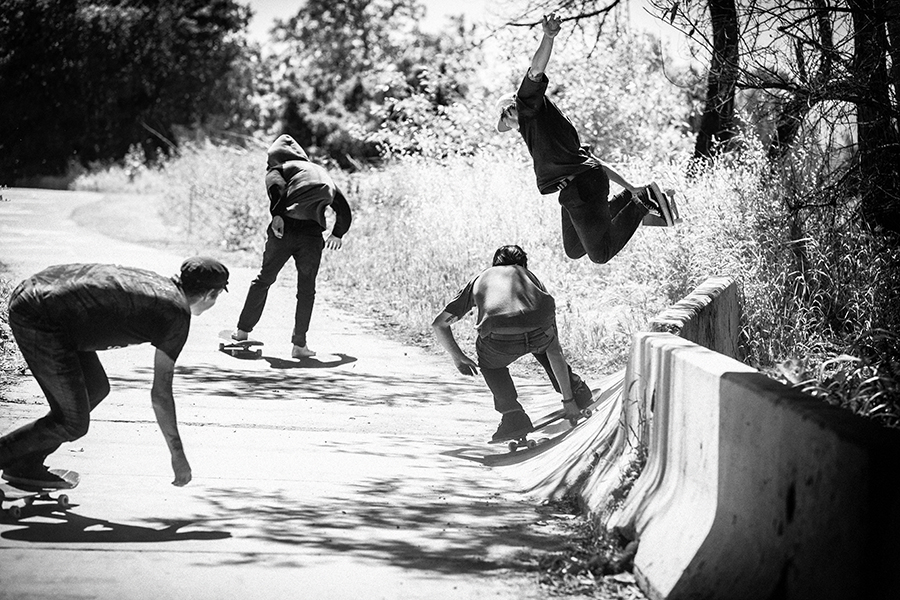

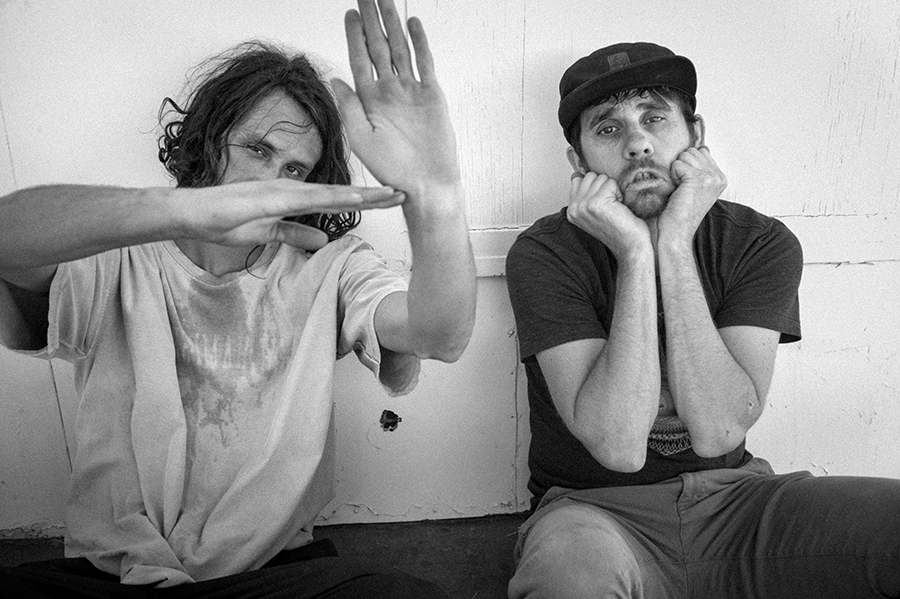
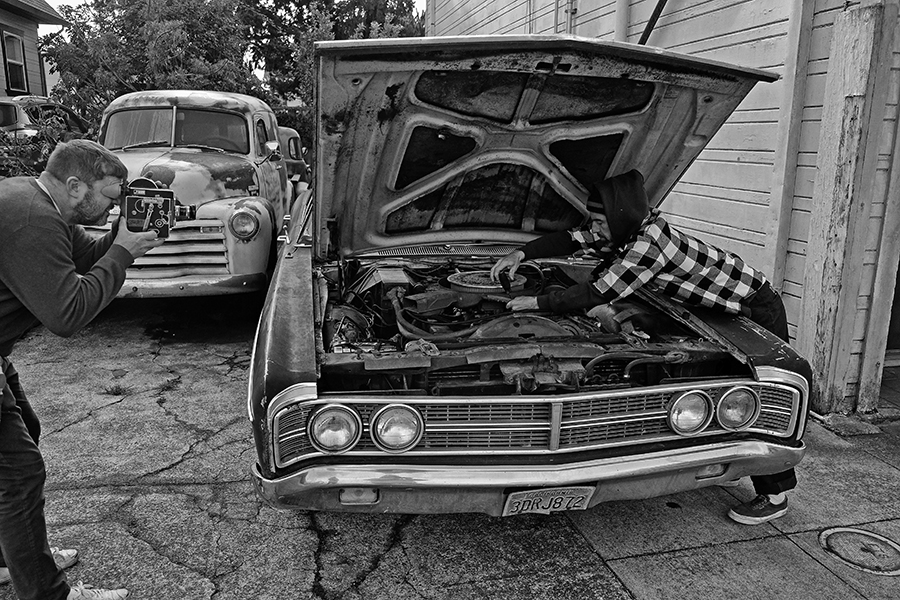

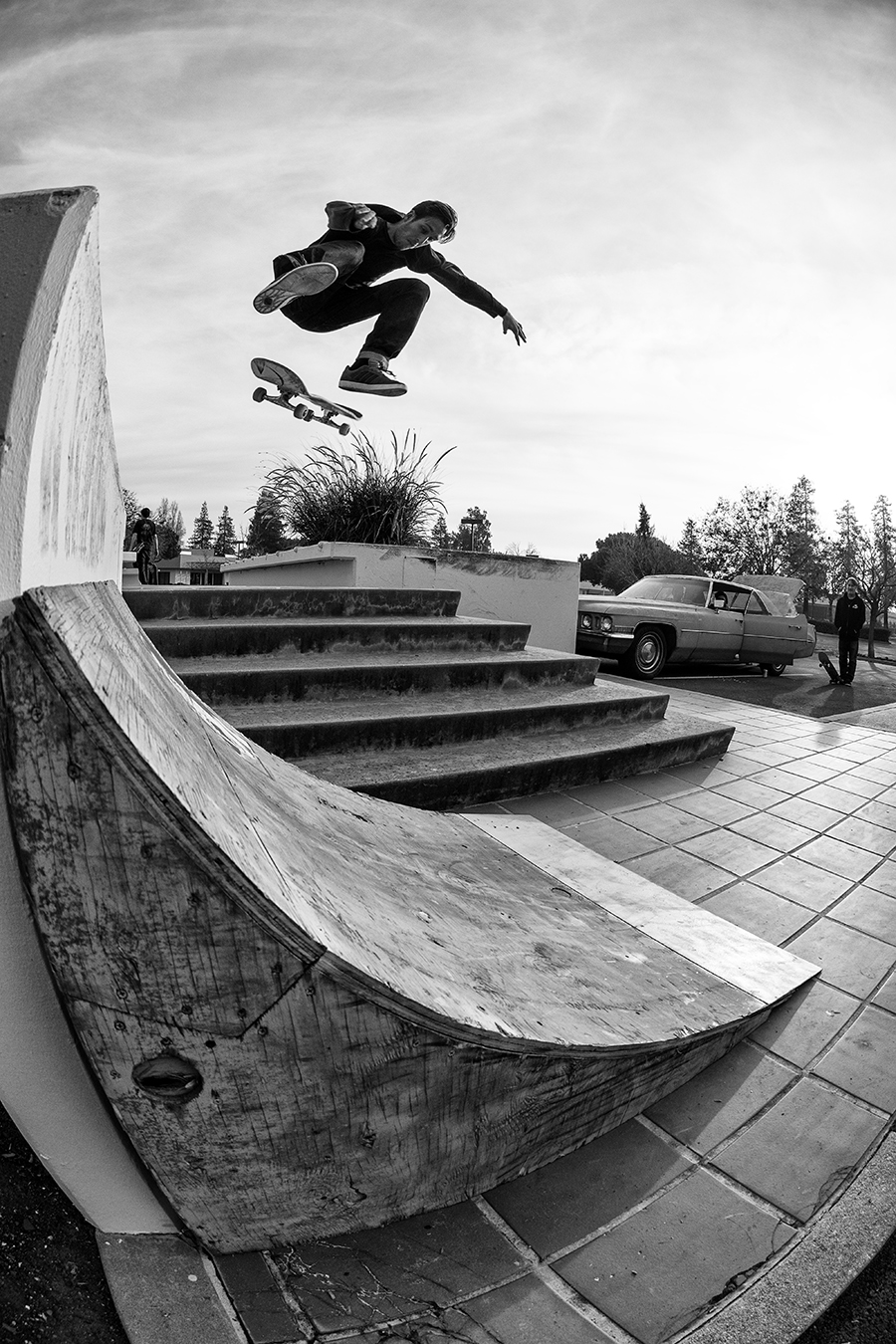
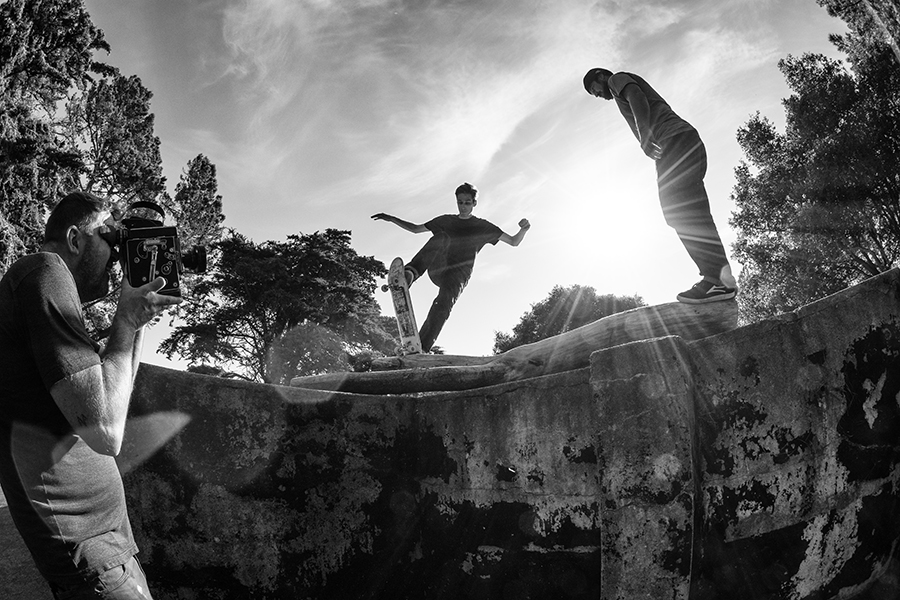
V: It was super beautiful seeing all these skaters on that level in one spot, not at a contest. How did you pick those skaters?
T: Well, most of them are my friends. Just friends from over the years and guys that are fans of my work. Some of them are friends of my friends. Like say, Mark Suciu, he was friend of my friend that has a skate shop, and I'm like, "Do you think Mark would like to be in the movie?" And he called him and he said yeah I want to do it. And he's incredible. So incredible.
V: Is there any skater in particular that you were stoked to work with?
T: Interesting you ask, because in a way I feel like ... How old are you?
V: I'm 44.
T: Okay, so you know skateboarding used to be very divided.
V: Yeah, especially in the 90s.
T: Yeah. You had the tech dudes and the gnar dudes and the pool dudes and the vert guys, and it wasn't very community oriented. But my feeling, always, always about skating was fucking go skating. Oh, there's a ditch, or a pool, or a curb, or a ledge, whatever, skate it. You know, people like Mark Gonzales, Dan Drehobl, Phil Shao, Cardiel, Trujillo... just fucking skateboarders.
V: Skate everything.
T: Yeah. I really didn't like it back then. I was the photo editor of Skateboarder Magazine at the end when I was working on skateboarding and just hated it. The vibe was dumb. I'm not saying everything's perfect now, but I would just say that, say a person like Evan Smith. He doesn't give a fuck about what anyone thinks, and he'll wallie up this and he'll k-grind in that, and he'll do anything he wants wherever he wants. And I just think that's beautiful. That's how I've always looked at skating and I just think it's a really neat time where people are having fun. All those people that were in my movie, they were all psyched on each other. They were just, "Awe, cool." You know? And they were stoked to meet and to have those moments. I would say Evan Smith's definitely like the spirit animal of crazy skateboarding today.
V: So you went on a lot of missions. Is there any mission in particular that sticks out?
T: The one that I like, the one that I think is the coolest, is the first one.
V: The two transitions on a car. Who came up with that idea?
T: Me.
V: How about the location? It seems it was in the middle of nowhere.
T: Yeah. There is this place called Slab City where all these people live. It's down by the Salton Sea, by the Mexican boarder. We went down there, and there's a lot of people on drugs and it just felt weird. And we were like, we don't want to spend two days here with these people. Al Partanen knew someone and they sent us a pin, there's these ditches right on the Mexican boarder. We pretty much pulled the cars down in there, built that stuff, skated it for two days and camped in there for two days, and that was it. It's not like it's the craziest skating or whatever, but it's a good vibe. And when we pulled the car away and it pulled down the other quarter pipe and then we made this spine. We weren't planning on that. We were leaving, And then we were like, "Oh fuck, we can make a spine," and then we had another session.

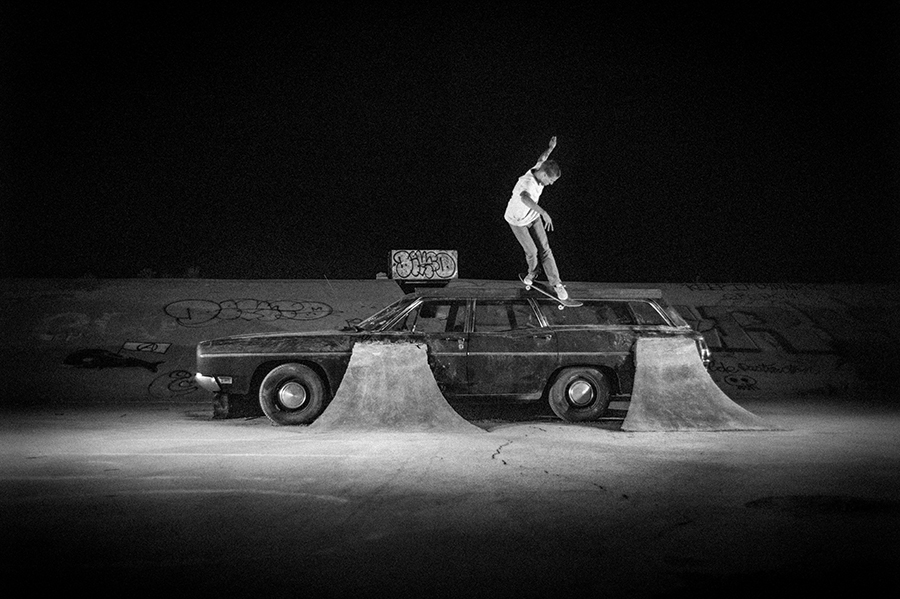
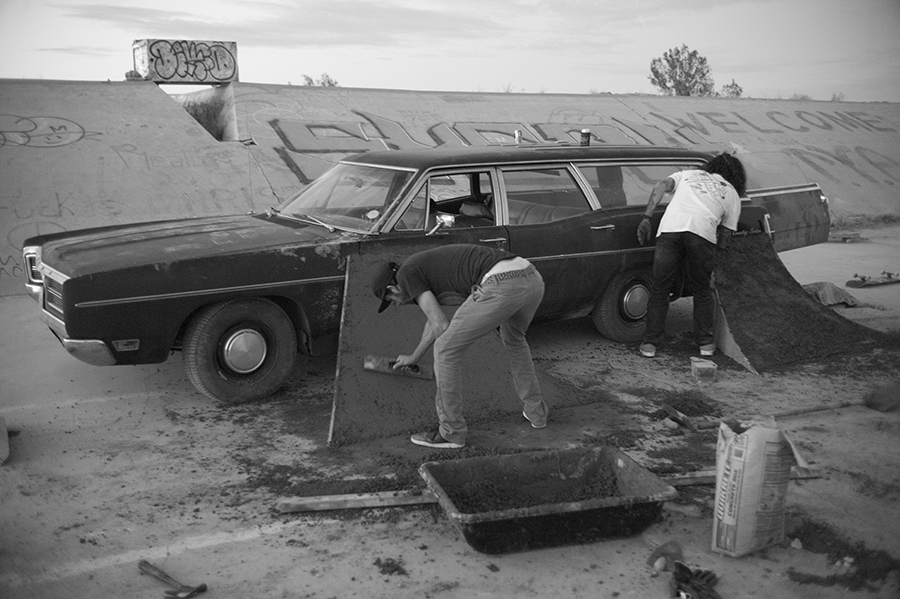

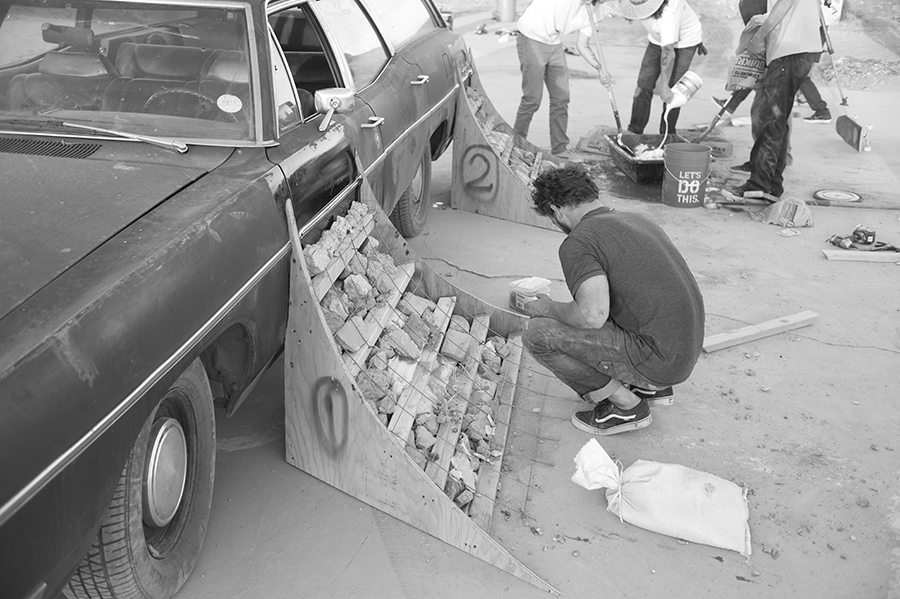
V: That's awesome.
T: I have all the respect for all the crazy skateboarders like Shane O'Neill or Nyjah Huston or whatever. People that are fuckin' psycho and incredible. But, it was fun to make something that also just celebrates friendship and community and people coming together regardless. As progression goes, everything evolves. And it's just gonna keep getting more intense, but at the end of the day, that intensity is really less than one percent of people that skateboard. Everyone else is just trying to have fun.
V: If you shot on 16mm you're not going to be able to record sound, right? So that means music will be the only sound in the film, but I could completely feel the feelings you get from skating without the sound of skating and skaters cheering for each other... That was pretty crazy.
T: It has a tension. And almost all the films I make are like that. What happens is, when you have the skate sounds it's like reality. It's reality. And also, I almost never shoot things at the normal speed. I either shoot it slow motion or a little bit faster. If the soundtrack's good enough it can hold the tension. Also, the way that I edit. I don't know if you noticed, but everything dissolves. It's not hard cuts. Everything's blending into the next, so I think it's really dreamy.
V: I heard that in the process, the band No Age was improvising to the film. What happened for the final version?
T: They improvised. They played to the film live in France last summer. Javier Mendizabal arranged the showing. He also works for Quicksilver in France. They have a very good music studio, so we went the day before they were going to play it and they went and practiced to it. They watched it, they improvised to it. We weren't even planning on using that for the final version, but it turned out really good. And then we came back and I edited the whole movie. We sat for four days and we went from front to back and we recorded all the parts in a row and then I used most of that, and I used some of the things from France.
V: The film is an hour long and it didn't even feel long at all. Especially nowadays, things are too quick.
T: And that's one thing for me is, I also don't care, you know? If people don't have an attention span, fuck 'em. I'm not making it for people with little attention spans. This is what I want it to be. It could have been shorter, it could have been longer, but this is what it felt like it wanted to be. Hope you like it. If you don't, who cares. I don't care. You know?
V: Was there a moment where you thought, "I have 20 minutes, I can just stop here." Where do you draw the line and say that the film is finished?
T: I just knew I wanted to get it done around now. Also, I had the two cars in my yard and my wife was like, "When the fuck are you going to get these fucking cars out of the yard." And I was like, "It's gonna happen. There's gonna be this day and we're going to do the smash-up derby and then we'll be done." And she's just like, "Yeah, right buddy." And she's a skateboarder. My wife's a skateboarder and we met from skateboarding. She's cool. She's a filmmaker, so she gets it but, she's like, "Well dude, get these old shitty cars out of the yard." So anyway, I knew I wanted to get it done.


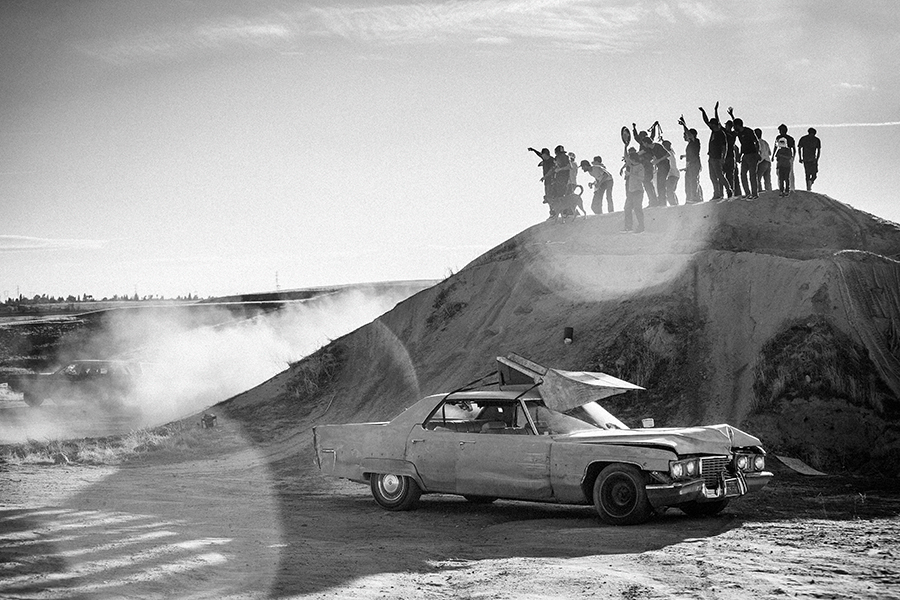
V: Which part was the first phase of the filming?
T: It's in the middle. You know the part where there's a jersey barrier and Nick Garcia goes to backslide tailslide it and he eats shit, immediately. Colin Provost and Evan Smith look really young. Seven years ago, so they're real young. So it's right in the middle, and then that one where we build on the car, that's probably four years later.
V: What's the most rewarding thing from this film?
T: I'm not about the end products of things, I'm about doing them. Everyone had so much fun, because it wasn't serious. It wasn't crazy serious. Definitely people were trying to skate good, but it was about having fun, so we had a really good time. So that was the best.
V: What do you want people to get out of your film?
T: You know what I want people to feel? I want them to feel whatever the fuck they feel. Art is what your experience is with whatever you're looking at or however you're connecting with it. So I want people to have a dynamic interesting experience, you know? I like the idea of not trying to tell people what they need to feel.
V: How can people watch the film?
T: It will probably be premiering around the world for the next six months, and in three months there will be a book available that you can get a download code and watch it. So people will be able to watch it from the download code or in the premiere. Eventually, probably towards the end of the year, once the books sell through and we wrap up the premieres it will be free online.
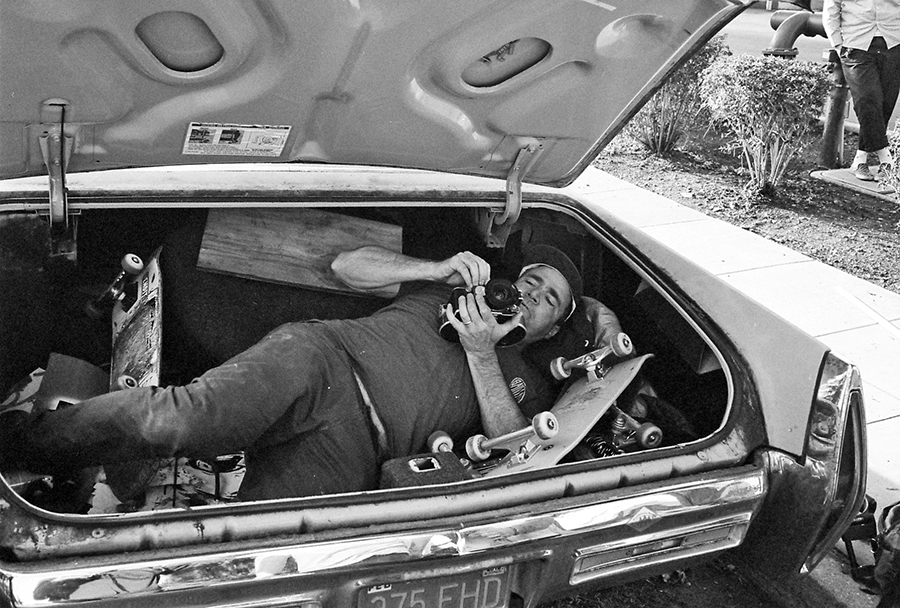



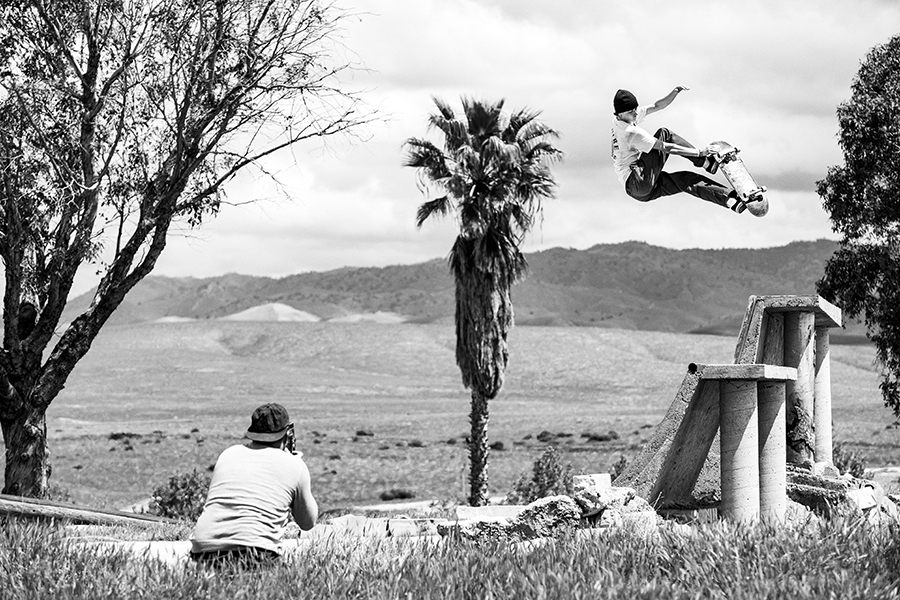


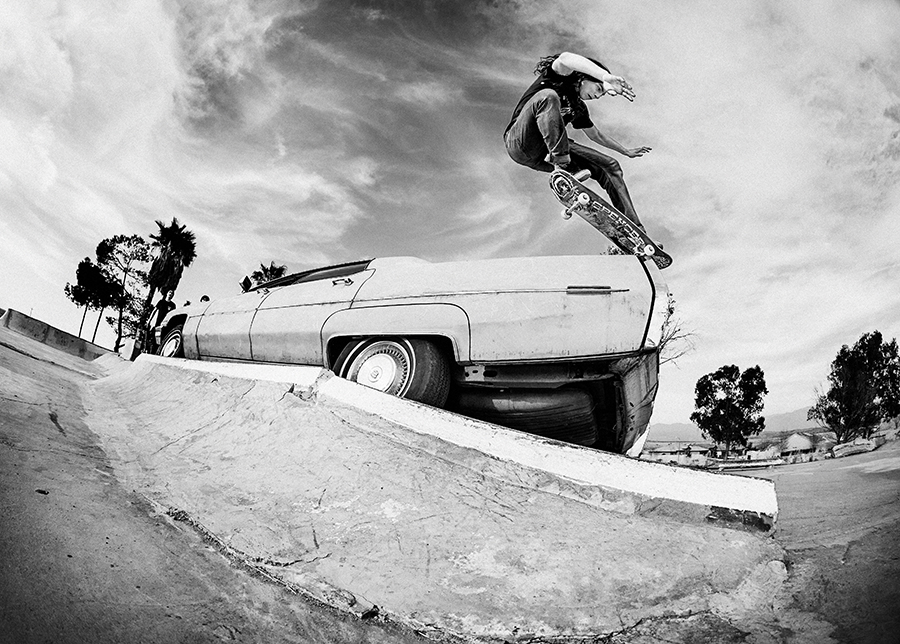

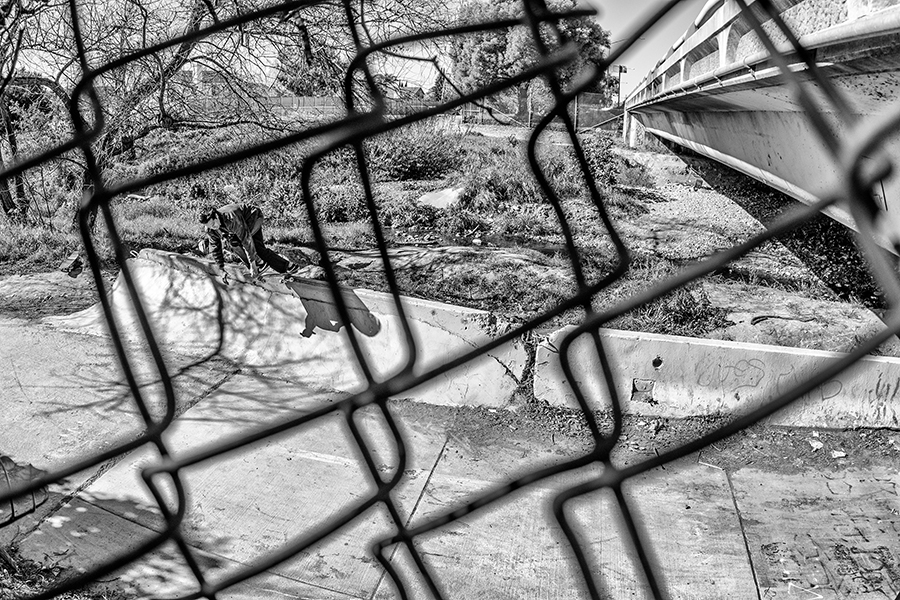
Thomas Campbell
Visual artist based in California. He was working in the skate industry in the '90s as photographer and filmmaker; his notable work includes "A Love Supreme" in '95. You can purchase "YE OLDE DESTRUCTION" book with streaming code here at UM YEAH ARTS.
@thomascampbellart

